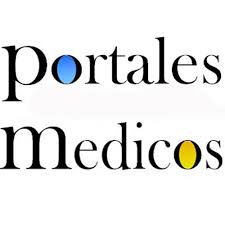Validez concurrente y confiabilidad inter e intra evaluador de la flexicurva para la medición de la cifosis torácica en adultos mayores
Concurrent validity and inter and intra evaluator reliability of the flexicurve for the measurement of thoracic kyphhosis in older adults
Resumen
DOI: https://doi.org/10.53766/GICOS/2024.09.03.02
Objetivo: determinar la validez concurrente y confiabilidad inter e intra evaluador de la flexicurva para la medición de la cifosis torácica en adultos mayores. Considerando la importancia de métodos de evaluación precisos y no invasivos para esta población, el estudio se centró en establecer la eficacia de la flexicurva comparándola con mediciones más convencionales. Método: se seleccionó una muestra de 26 adultos mayores, con una distribución equitativa por género y una edad promedio de 72.6 años. Se utilizó la flexicurva y el inclinómetro para medir la cifosis torácica, y se calculó la sensibilidad, especificidad y confiabilidad intra e inter observador de la flexicurva. Además, se realizaron comparaciones estadísticas para evaluar las diferencias entre las mediciones de ambos instrumentos. Resultados: la flexicurva mostró una sensibilidad del 100% y una especificidad del 73.7% en la detección de hipercifosis. La confiabilidad intraobservador fue de 0.728 y la interobservador de 0.716, indicando una confiabilidad moderada a buena. Se encontraron diferencias significativas entre las mediciones de la flexicurva y el inclinómetro. Conclusiones: La flexicurva se demostró como una herramienta confiable y válida para la evaluación de la cifosis torácica en adultos mayores. Los hallazgos sugieren la necesidad de estudios adicionales para explorar la aplicación de la flexicurva en distintas poblaciones y mejorar la precisión de las mediciones.
Objective: determine the concurrent validity and inter- and intrarater reliability of the flexicurve for measuring thoracic kyphosis in older adults. Considering the importance of accurate and non-invasive assessment methods for this population, the study focused on establishing the effectiveness of the flexicurve by comparing it to more conventional measurements. Method: a sample of 26 older adults was selected, with an equal distribution by gender and an average age of 72.6 years. The flexicurve and inclinometer were used to measure thoracic kyphosis, and the sensitivity, specificity, and intra- and interobserver reliability of the flexicurve were calculated. In addition, statistical comparisons were made to evaluate the differences between the measurements of both instruments. Results: the flexicurve showed a sensitivity of 100% and a specificity of 73.7% in the detection of hyperkyphosis. The intraobserver reliability was 0.728 and the interobserver reliability was 0.716, indicating moderate to good reliability. Significant differences were found between the flexicurve and inclinometer measurements. Conclusions: The flexicurve was demonstrated as a reliable and valid tool for the evaluation of thoracic kyphosis in older adults. The findings suggest the need for additional studies to explore the application of the flexicurve in different populations and improve measurement accuracy.
Recibido: 10-04-2024
Aceptado: 21-06-2024
Publicado: 01-11-2024
Palabras clave
Texto completo:
PDFReferencias
Azadinia, F., Kamyab, M., Behtash, H., Ganjavian, M. S., & Javaheri, M. R. M. (2014). The validity and reliability of noninvasive methods for measuring kyphosis. Journal of Spinal Disorders and Techniques, 27(6). ttps://doi.org/10.1097/BSD.0b013e31829a3574
Barrett, E., Lenehan, B., O’sullivan, K., Lewis, J., & McCreesh, K. (2018a). Validation of the manual inclinometer and flexicurve for the measurement of thoracic kyphosis. Physiotherapy Theory and Practice, 34(4), 301–308. https://doi.org/10.1080/09593985.2017.1394411
Barrett, E., McCreesh, K., & Lewis, J. (2013). Intrarater and Interrater Reliability of the Flexicurve Index, Flexicurve Angle, and Manual Inclinometer for the Measurement of Thoracic Kyphosis. Rehabilitation Research and Practice, 1–7. https://doi.org/10.1155/2013/475870
Barrett, E., McCreesh, K., & Lewis, J. (2014). Reliability and validity of non- radiographic methods of thoracic kyphosis measurement: A systematic review. Manual Therapy, 19(1), 10–17. https://doi.org/10.1016/j.math.2013.09.003
Briggs, A. M., Wrigley, T. v., Tully, E. A., Adams, P. E., Greig, A. M., & Bennell, K.L. (2007). Radiographic measures of thoracic kyphosis in osteoporosis: Cobb and vertebral centroid angles. Skeletal Radiology, 36(8), 761–767. https://doi.org/10.1007/s00256-007-0284-8
Charlton, P. C., Mentiplay, B. F., Pua, Y. H., & Clark, R. A. (2015). Reliability and concurrent validity of a Smartphone, bubble inclinometer and motion analysis system for measurement of hip joint range of motion. Journal of Science and Medicine in Sport, 18(3), 262–267. https://doi.org/10.1016/J.JSAMS.2014.04.008
Fon, G. J., Pitt, M. J., & Thies, A. C. (1980). Thoracic kyphosis: Range in normal subjects. American Journal of Roentgenology, 134(5), 979–983. https://doi.org/10.2214/AJR.134.5.979
Fortin, C., Ehrmann, D., Cheriet, F., & Labelle, H. (2011). Clinical methods for quantifying body segment posture: A literature review. Disability and Rehabilitation, 33(5), 367–383. https://doi.org/10.3109/09638288.2010.492066
Greendale, G. A., Nili, N. S., Huang, M. H., Seeger, L., & Karlamangla, A. S. (2011). The reliability and validity of three non-radiological measures of thoracic kyphosis and their relations to the standing radiological Cobb angle. Osteoporosis International, 22(6), 1897–1905. https://doi.org/10.1007/s00198-010-1422-z
Grindle, D. M., Mousavi, S. J., Allaire, B. T., White, A. P., & Anderson, D. E. (2020). Validity of flexicurve and motion capture for measurements of thoracic kyphosis vs standing radiographic measurements. JOR Spine, 3(3). https://doi.org/10.1002/JSP2.1120
Hannink, E., Dawes, H., Shannon, T. M. L., & Barker, K. L. (2022). Validity of sagittal thoracolumbar curvature measurement using a non-radiographic surface topography method. Spine Deformity, 10(6), 1299. https://doi.org/10.1007/S43390-022-00538-0
Hunter, D. J., Rivett, D. A., McKiernan, S., Weerasekara, I., & Snodgrass, S. J. (2018). Is the inclinometer a valid measure of thoracic kyphosis? A cross-sectional study. Brazilian Journal of Physical Therapy, 22(4), 310. https://doi.org/10.1016/J.BJPT.2018.02.005
Kado, D. M., Huang, M. H., Karlamangla, A. S., Cawthon, P., Katzman, W., Hillier, T. A., Ensrud, K., & Cummings, S. R. (2013a). Factors associated with kyphosis progression in older women: 15 years’ experience in the study of osteoporotic fractures. Journal of Bone and Mineral Research, 28(1), 179–187. https://doi.org/10.1002/JBMR.1728
Lundon, K. M. A., Li, A. M. W. Y., & Bibershtein, S. (1998). Interrater and intrarater reliability in the measurement of kyphosis in postmenopausal women with osteoporosis. Spine, 23(18), 1978–1985. https://doi.org/10.1097/00007632-199809150-00013
Puche, R. C., Morosano, M., Masoni, A., Jimeno, N. P., Bertoluzzo, S. M., Podadera, J. C., Podadera, M. A., Bocanera, R., & Tozzini, R. (1995). The natural history of kyphosis in postmenopausal women. Bone, 17(3), 239–246. https://doi.org/10.1016/8756-3282(95)00212-V
Salamh, P. A., & Kolber, M. (2014). The reliability, minimal detectable change and concurrent validity of a gravity-based bubble inclinometer and iphone application for measuring standing lumbar lordosis. Physiotherapy Theory and Practice, 30(1), 62–67. https://doi.org/10.3109/09593985.2013.800174
Spencer, L., Fary, R., McKenna, L., Ho, R., & Briffa, K. (2019). Thoracic kyphosis assessment in postmenopausal women: an examination of the Flexicurve method in comparison to radiological methods. Osteoporosis International, 30(10), 2009– 2018. https://doi.org/10.1007/S00198-019-05023-5
Spencer, L., McKenna, L., Fary, R., Ho, R., & Briffa, K. (2020). Is Breast Size Related to Prevalent Thoracic Vertebral Fracture? A Cross-Sectional Study. JBMR Plus, 4(7), e10371. https://doi.org/10.1002/jbm4.10371
Woods, G. N., Huang, M. H., Lee, J. H., Cawthon, P. M., Fink, H. A., Schousboe, J. T., & Kado, D. M. (2020). Factors Associated with Kyphosis and Kyphosis Progression in Older Men: The MrOS Study. Journal of Bone and Mineral Research, 35(11), 2193–2198. https://doi.org/10.1002/JBMR.4123
Enlaces refback
- No hay ningún enlace refback.
Depósito Legal Electrónico: ME2016000090
ISSN Electrónico: 2610-797X
DOI: https://doi.org/10.53766/GICOS
| Se encuentra actualmente registrada y aceptada en las siguientes base de datos, directorios e índices: | |||
 | |||
 |  |  |  |
 |  | ||
 |  |  |  |
 |  |  |  |
 |  |  |  |
 |  |  |  |
![]()
Todos los documentos publicados en esta revista se distribuyen bajo una
Licencia Creative Commons Atribución -No Comercial- Compartir Igual 4.0 Internacional.
Por lo que el envío, procesamiento y publicación de artículos en la revista es totalmente gratuito.

